New products at Crocus
by Sarah - February 6th, 2010.Filed under: Crocus, New Products.
New lines at Crocus
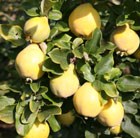
quince £34.99
Position: full sunSoil: fertile, moist but well drainedRate of growth: averageFlowering period: April to MayFlower colour: pale pink to whiteOther features: quinces were once used as room freshenersHardiness: fully hardyNative to rocky slopes in Southwestern Asia, quinces are attractive small, rounded trees with knarled and slightly contorted branches. The stems are clothed in shallow bowl-shaped, pale pink to white flowers in late spring, and these are followed by very fragrant pale green, pear-like fruits. These ripen in autumn to a golden yellow, and grow up to 8cm long. They are too bitter and hard to eat fresh, but when cooked the flesh softens and turns pink and makes a delicious jam. It is a very hardy plant, but it needs warmth and sun to fruit well, so in colder climates it is best trained against a south facing wall. It works well in oriental style gardens and it has received the Award of Merit from the Royal Horticultural Society.Garden care: When planting incorporate lots of well-rotted garden compost in the planting hole and stake firmly.
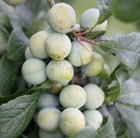
greengage £31.99
Position: full sunSoil: will tolerate most soils, except very chalky or badly drainedRate of growth: slow growingUltimate size on St Julien rootstock: 6 x 6m (20x20ft)Flowering period: MayFlower colour: whiteOther features: a juicy culinary or desert gage (early September)Hardiness: fully hardyReliable, heavy cropping gage that is similar to the old ‘Greengage’ variety. Single, cup-shaped white flowers appear in late spring, followed by yellow-green fruit with a superb, juicy flavour, which are ready for picking in early September. A good, vigorous grower that does set some fruit without a pollinator, though planting a late flowering plum, such as ‘Marjorie’s Seedling’ will increase cropping.Garden care: When planting incorporate lots of well-rotted garden compost in the planting hole and stake firmly. Prune in summer to reduce the risk of silver leaf and bacterial canker.
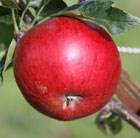
apple £29.99
Position: full sunSoil: fertile, well-drained soilRate of growth: averageUltimate size on M27 rootstock: 1.8 x 18m (6ft x 6ft)Ultimate size on M26 rootstock: 3 x 3m (10 x 10ft)Flowering period: April and MayHardiness: fully hardyPollination Group: B – flowering mid seasonPretty, pure white, cup-shaped flowers in mid and late spring, followed by sweet, red, dessert apples for harvesting in early October. This robust apple tree produces a heavy crop of fruits with a Cox-like flavour, but a crisper texture and juicy, white flesh. It is ideal for colder areas.Garden care: Keep the base of the tree weed free, fertilise at the beginning of each year and water regularly during hot, dry spells. Remove damaged or crossing branches during the dormant season.Pollination Information: This apple belongs to pollination group B, so you will need need to plant one other different variety of apple to guarantee cross pollination, and a subsequent bumper crop. Ideally this should come from the same pollination group, however it is possible to use one from group A or C as well.
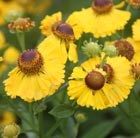
sneezeweed £9.99
Position: full sunSoil: fertile, moist but well-drained soilRate of growth: average Flowering period: August and SeptemberHardiness: fully hardyAn upright, perennial that looks brilliant planted in bold drifts where its bright flowerheads can illuminate a border from midsummer to early autumn. Rich yellow ray florets surround the brown centre creating a golden glow that will also act as a magnet to bees and butterflies. It works well in mixed borders or more naturalised planting schemes and it associates very well with grasses.Garden care: Heleniums are versatile plants that love plenty of sunshine and moist soil. They rarely suffer from pests or diseases, however young plants do need to be protected from slug attack. Tall varieties need to be staked. To encourage the plant to repeat flower deadhead back to side shoots that have flower buds emerging. Cut back by half after flowering to help prevent mildew. Cut down to the ground in late winter. Every two to three years divide the plants in spring to keep them in top condition. When replanting add loads of well-rotted organic matter to the soil to feed them and keep them moist.
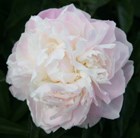
paeony / peony £8.99
Position: full sun or partial shadeSoil: fertile, moisture-retentive yet well-drainedRate of growth: averageFlowering period: June to JulyHardiness: fully hardyPrized for their blowsy, glamorous blooms and glossy, deeply cut foliage, peonies are held in deep affection by many gardeners, despite their shortish flowering season and vulnerability to peony wilt in damp weather. It’s easy to see why. From the promise of early spring, when their red, mottled shoots push through bare earth and the handsome foliage unfurls from spherical red buds, to early summer, when the huge flowers burst open, peonies exert a fascination that few can resist. ‘Shirley Temple’ is later flowering than many peonies with large, pale pink,double flowers, gently fading to buff-white, and mid green leaves. The centre of each beautiful, scented flower is full of small, loosely arranged ruffled petals. It will thrive in full sun or partial shade. Fill the bare ground around the peony before the leaves appear with spring bulbs to prolong the season of interest.Garden care: Deadhead after flowering. In early spring apply a top dressing of a balanced, slow release fertiliser around the base of the plant and mulch with well-rotted compost or manure. If the plant shows signs of collapse or the leaves become spotty, this may be a symptom of peony botrytis. Remove affected leaves immediately. In the autumn, cut off all the foliage and dispose of it to prevent reinfection the following spring.
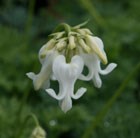
bleeding heart £8.49
Position: full sun or partial shadeSoil: moist, humus-rich, preferably neutral to slightly alkalineRate of growth: averageFlowering period: April to MayHardiness: fully hardyArching sprays of dainty, ivory flowers like lockets appear in late spring high above pretty, fern-like, blue-green foliage. Easy to grow, this variety is compact and has a long flowering season. It looks fabulous planted in groups towards the front of a shady border or as part of a cottage garden scheme. As long as the ground is kept moist, it will thrive in full sun or partial shade.Dicentras are northern hemisphere plants, growing from Asia to North America. In their natural habitat they are found in moist soils in the cool margins of woodlands. This dicentra was first introduced in 1816, then disappeared from cultivation but was reintroduced by plant collector Robert Fortune in 1846. It soon became one of the most popular garden plants. Garden care: Dicentras are happy in any good garden soil that is fertile but not too heavy. Enrich the soil with plenty of leaf mould before planting and apply a mulch in autumn too. This plant will appreciate a light top-dressing with fertiliser in March.
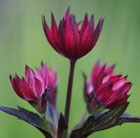
masterwort £8.49
Position: full sun or partial shadeSoil: fertile, moist, preferably humus-rich soilRate of growth: average to fast-growingFlowering period: June to AugustHardiness: fully hardySultry, dark red button flowers, surrounded by a ruff of near-black bracts are produced from June to August above deeply lobed, dark green leaves with almost imperceptible black margins. This stunning, dark red astrantia works equally well in contemporary and cottage-style plantings. For best colour, plant it in fertile, moist soil in full sun.Astrantias have been cultivated in Britain since the 16th century and have numerous common names, such as melancholy gentleman, Hatties pincushion and the more well-known masterwort.Garden care: Astrantias do not like dry soil. Incorporate plenty of organic matter when planting and water well in dry weather, especially newly established plants. Lift and divide large clumps in early spring and apply a generous 5-7cm mulch of well-rotted manure or garden compost around the plant. Divided specimens may take some time to establish since they dont like having their roots disturbed.
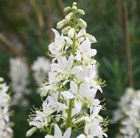
burning bush £7.99
Position: full sun or partial shadeSoil: dry, well-drained soilRate of growth: average Flowering period: JuneHardiness: fully hardyHandsome spires of white or pinkish-white flowers appear from early summer above leathery leaves that smell of lemons, especially when crushed. The flowers are followed by winged seed-pods. This lovely, clump forming perennial gets its common name, burning bush, from the fact that the unripened fruit and the flowers contain an aromatic, volatile oil which may be ignited in hot weather, emitting a delicious aroma. A great plant for the middle of a mixed or herbaceous border.Garden care: Water freely during the growing season. Divide congested clumps in autumn or spring.
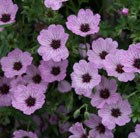
cranesbill £6.99
Position: full sun or partial shadeSoil: fertile, well-drained soilRate of growth: fast growingFlowering period: May to JulyHardiness: fully hardyThis early-flowering, dwarf geranium has small, deep pink flowers with maroon veins and centres and pretty, deeply cut, grey-green leaves. It looks particularly good planted en masse in a rock garden, or at the edge of a raised border, where its rather shy flowers can be appreciated. Provided it has good drainage, it will produce a mass of attractively veined pink flowers from late spring to early summer.Garden care: In midsummer rejuvenate plants that are beginning to look jaded, by removing old flowered stems and leaves. Lift and divide large colonies in spring.
mullein £6.99
navelwort £6.99
avens £6.99
fountain grass £6.99
himalayan blue poppy £6.99
Perennial Honesty £6.99
spurge £6.99
delphinium £6.49
masterwort £6.49
delphinium £6.49






